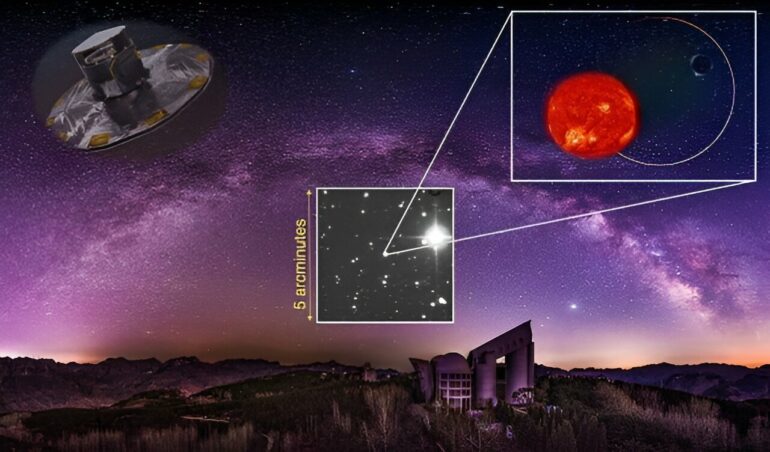Chinese researchers have discovered a promising mass-gap black hole using radial velocity and astrometry methods. The study was published online in Nature Astronomy on Sept. 10, and was conducted by a team led by Dr. Wang Song, an associate researcher from the National Astronomical Observatories of the Chinese Academy of Sciences (NAOC).
Over the past six decades, scientists have discovered two dozen stellar-mass black holes using X-ray methods. The mass distribution of these black holes, mainly between 5 to 25 solar masses, shows a scarcity of black holes with masses ranging from 3 to 5 solar masses.
The mass gap may be caused by special mechanisms during supernova explosions that prevent the formation of black holes within this mass range, or it could be due to observational bias, since binaries including lower-mass black holes are more easily disrupted by natal kicks during supernova explosions and are therefore harder to detect.
Although recent gravitational wave observations by the Laser Interferometer Gravitational-Wave Observatory have revealed the existence of compact objects within this mass gap, the question of whether low-mass black holes could exist in binaries remains a matter of debate. Such a system was expected to be non-interacting and without X-ray emission and could be searched for using radial-velocity and astrometric methods.
Using spectroscopy obtained from the Large Sky Area Multi-Object Fiber Spectroscopic Telescope (LAMOST) and astrometry data from Gaia, this study conducted a search for binaries containing compact components.
The researchers discovered a low-mass dark object located in the binary system G3425. The visible star is a red giant with a mass of about 2.7 solar masses, while the dark object’s mass is about 3.6 solar masses, with a range of 3.1 to 4.4 solar masses. There is no light contribution from any other component in the system besides the red giant, proving that the dark companion is a black hole, with its mass falling within the mass gap.
More notably, G3425 is a wide binary exhibiting an orbital period of approximately 880 days and near-zero eccentricity. The researchers found it difficult to explain its formation through standard binary evolutionary processes. Consequently, the formation of this surprisingly wide circular orbit challenges current binary evolution and supernova explosion theories.
The study demonstrates that combining radial velocity and astrometry can effectively detect quiescent compact objects in binary systems. This intriguing system strongly suggests the existence of binary systems containing low-mass black holes and can provide new insights into the formation and evolution of binary systems.
More information:
Song Wang et al, A potential mass-gap black hole in a wide binary with a circular orbit, Nature Astronomy (2024). DOI: 10.1038/s41550-024-02359-9
Provided by
Chinese Academy of Sciences
Citation:
Astronomers discover a long-hidden small black hole in an unusually evolved binary system (2024, September 11)


